AFV Club | S-70C-1 Blue Hawk (1:35) AF35S13
Reviewed by Gene Nollmann
From HobbyLink Japan, "This is Academy's military-scale Blackhawk kit repackaged by AFV Club with markings to recreate a 'copter of the Taiwanese rescue team. Includes resin parts to make the detail modifications necessary. Complete interior. Big!" Price, 8500¥ or about $79.
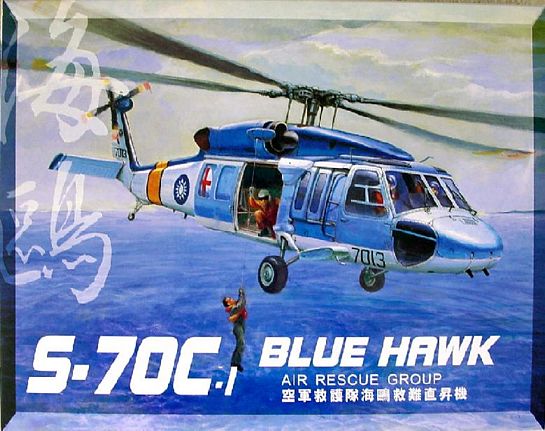
Wanting to add some kind of Black Hawk to my collection, this kit seemed to satisfy my predisposition for items a little off the main stream. Further, the idea of re-packaging in this fashion caught my curiosity. AFV Club, based in Taiwan, is a producer of high quality injection molded kits, track sets and photoetched metal detail sets almost exclusively catering to the heavy motorized armour hobbyist. They also publish AFV Modeller Magazine and should not be confused with the "Armed Forces Vacation Club". Lately some 'copters seem to be creeping into their line (they now offer a Taiwan Army AH-1W Super Cobra with a resin chin turret and turned aluminum barrels).
The repackaging is literal; they provide a new sturdy box with the image above as the boxtop artwork. Scanning the web will reveal that the Taiwanese Air Force has made good use of the S-70C-1 Blue Hawk (a civilian UH-60) in rescuing stranded fishermen as well as downed pilots.
Within the new box are all the sprues of the MRC Academy UH-60L kit (©2000 by MRC) molded in light grey plastic. To this AFV Club adds 25 pieces of cast resin to make the conversion, a new decal sheet that covers an early or late livery of the type in Taiwanese rescue service and a 12-page instruction manual.
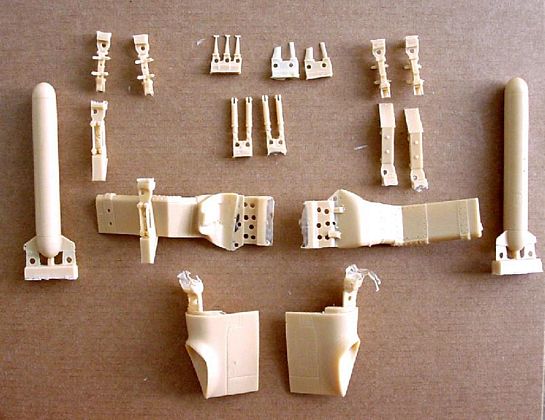
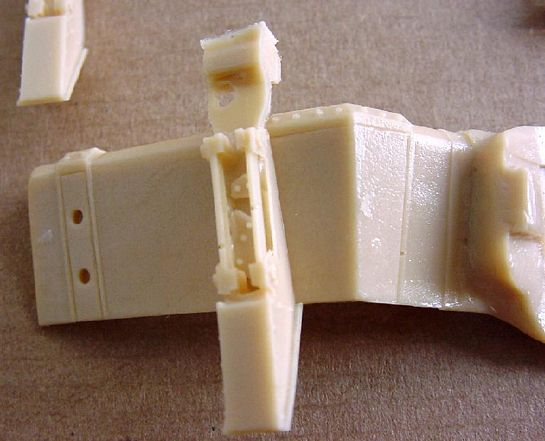
The resin pieces will require some removal from carriers and flash clean up but appear to be well formed and bubble free. The largest pieces consist of a revised shape for the turbine exhaust, revised outriggers for carrying auxiliary fuel tanks, and two outrigger fuel tanks. The smaller pieces provide for two carrier rack assemblies per outrigger and two angle braces for each arm. The very small pieces are antenna to add to the tail boom. The antenna pieces are quite delicate and will be connected by an 'antenna' wire or pieces of stretched sprue. Oddly, the boxart does not illustrate the outrigger system installed. However, the resin pieces will help approach the appearance of this:
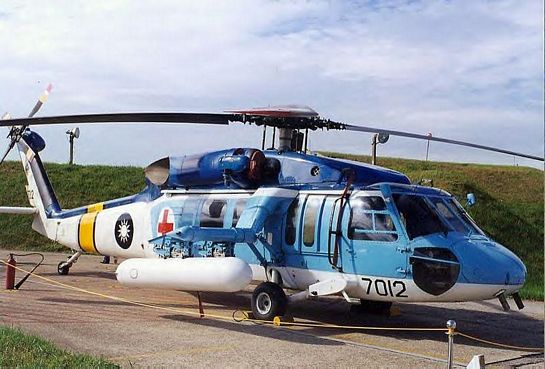
Source: www.taiwanairpower.org
The decals allow for two 'livery' schemes. One is identified as "early" and the other as "present", which is much like the photo above. A full compliment of numerals allows matching any S-70C that had been in service with Taiwan. The decal colors are bright but appear to be a good match to the reference photo above. Very little stencil information is provided (and it is difficult to see in the photo reference what amount would be appropriate). The decals do seem to have found a good balance between pigment density and decal thickness, but without actually applying the decals I am only judging that they do not seem to sit high on the decal sheet.
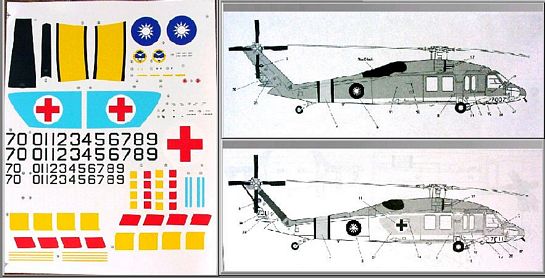
The 'new' parts of the instruction book are in Chinese only; however, the booklet is well illustrated, lifting liberally from the original English MRC booklet with inserts arranged into the construction order where the AFV Club resin parts are to be installed. A couple of key labels are in Chinese and I sure wish I knew what they were instructing. The traditional first page gives a little history/background on the S-70C-1, but alas, it is in Chinese only. The decal placement drawings show all four meaningful views of the ship with numerals cross-referenced on the decal sheet for placement. Color cross-references are with Hobby Color and Mr. Color with generic color names in English and Chinese.
References are sparse:
http://www.taiwanairpower.org/s70c.php
Lists all the code numbers, some very nice overall photos, brief description of service history.
http://www.blue-chips.net/s-70c.htm
Succinct history, one small photo.
Conclusion
The MRC Academy model is quite good and the AFV Club enhancements can help to provide most of what a modeler will need to produce a rewarding example of the Taiwanese S-70C-1. A bit on the pricey side, but in the rare atmosphere of limited-run kits, that is to be expected.
Some time after seeing this kit I found (and lost) some information on an even more advanced notion of after-market-packaging. I apologize to the persons responsible for not remembering their names, but they had taken a Tamiya 1:24 racing Porsche engine/chassis as a base (as best as I can recall) and provided various pieces to change the body-type + detailing pieces + decals + (and this is the one that made me sit up) a CD with enough photo reference to detail the beast to the 9s. Now that's a one stop package (well almost, don't we all have all the glue, #11s, and paint in stock?).
I like what the AFV Club has attempted with the S-70C-1, and hope they are encouraged to expand their large-scale aircraft line utilizing the techniques of production that has earned them such high regard in the model armour field.
© Gene Nollmann 2004
This review was published on Saturday, July 02 2011; Last modified on Wednesday, May 18 2016
